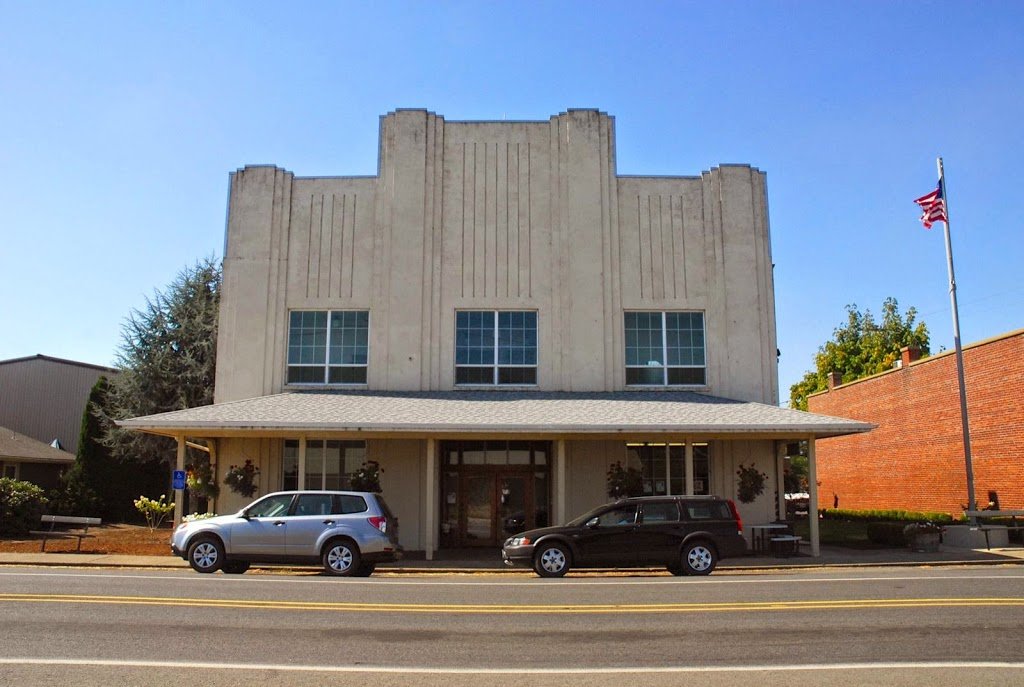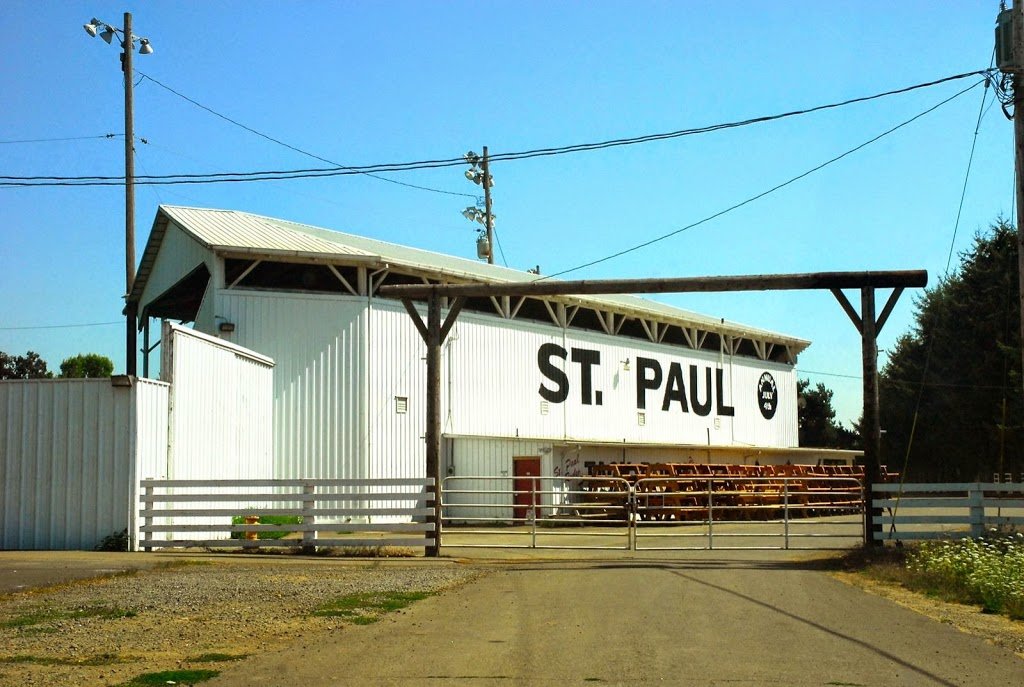On this travel adventure, we discovered that Marion County history starts here in the French Prairie with the French Canadian men who had worked for the Hudson Bay Company. We learned that it had been the policy of the company that their employees once retired had to return from whence they came. Some had to return to the Quebec area because of this. The Indian wives from this area became very homesick so far from their homeland.
John McLoughlin was the Chief Factor (legal representative) of the Columbia Fur District of the Hudson’s Bay Company at Fort Vancouver. (He was later known as the “Father of Oregon” for his role in assisting the American cause in the Oregon Country in the Pacific Northwest.) He requested the Hudson’s Bay Company policy be changed and it was. These men returned with their wives and settled here as early as 1828. Long inhabited by native populations, the burned-over, forest-free lands were suitable for farming and river transportation made trade possible. These settlers, among them Etienne Lucier, Joseph Gervais and Louis LaBonte, recreated the culture of their youth in Canada.
Basic to that culture was their Catholic religion and they built a log church as early as 1836. In the next year Father Francois Blanchet of Quebec arrived to create the first Catholic mission in the Oregon country of the Pacific Northwest. On January 6, 1839, he celebrated the first Catholic mass in Oregon at St. Paul when he blessed the log church. The present St. Paul Roman Catholic Church was built in 1846, after the original church burned, and is considered the oldest brick building in the Pacific Northwest. The church remains the most significant institution in the city.
St. Paul had a post office by 1874, but was not was incorporated until 1901. Today it is still a small community, content with a size of less than on half a square mile and a population of about 400. St. Paul is one of few cities to actually reduce their Urban Growth Boundary, making a statement that they wish to remain small. The city is located 26 miles northwest of Salem and is one mile south of the Willamette River. The surrounding area consists of lush farmlands with flat prairies and rolling hills. Agriculture is the primary source of industry as it was originally when the area first settled in the early 1800s.
 |
| City Hall |
When we visited St. Paul, we entered from the east on Highway 219, but River Road is a more likely route from Salem. We suggest a visitor begin at City Hall offices in the Community Hall at 20239 Main Street Northeast. Built with WPA funds in the 1930s, the structure also contains a large room for community activities on the first floor with an attractive ballroom above. Near the fire station, three historic residences have been relocated with one occupied. At the rear of these buildings is a park like area, beyond that green space is a development of new residences. There is no city guide to historic sites, but the City Hall (open Tuesday through Friday) distributes an undated French Prairie historic tour guide, “French Prairie Tour”. It is an excellent overview of North Marion County. This guide will remind you that Champoeg, four miles north of St. Paul, is anther attractive site for Oregon historic adventures. In 1843, a meeting there became the basis of a provisional Oregon government.
The City Hall is within the St. Paul Historic District listed on the National Register of Historic Places (NRHP) in 1982, containing 63 contributing properties, with the 1846 St. Paul Catholic Church, which is also individually listed on the NRHP, as the centerpiece.
Three blocks north of the City Hall (at Main Street/Hwy. 219 intersection) is the Historical Pioneer Cemetery Remembrance Wall, standing at the rear of the cemetery. The names on the wall honor 535 early settlers and Native Americans buried in this St. Paul Cemetery established in 1839. Unfortunately, only one grave is today marked with a gravestone: all the others were mistakenly bulldozed sometime in the 1930s. The marked grave is especially significant as it represents the burial location of William Cannon who arrived in Oregon in 1811 as a part of Astor’s American Fur Company. He is the only authenticated Revolutionary War veteran buried in Oregon. Other early settlers buried in the pioneer cemetery include Etienne Lucier, known as “The Father of Oregon Agriculture”, and Francois Rivet and Phillippe Degre who claimed to be members of the Lewis and Clark Expedition. The Wall of Remembrance was dedicated in 2005, with members of the Confederated Tribes of the Grand Ronde Community of Oregon as honored guests.
Walking back toward the City Hall, three historic houses have been relocated side-by-side in a meadow north of the fire station for their preservation and future use. The brightly colored Queen Anne residence is occupied by the widow of Joseph McKay, founder of the St. Paul Mission Historical Society. The house in the center was originally the home of Johanus Fredericus Josephus Brentano in the 1860’s. Possibly the first licensed physician in Oregon, he was noted for making house calls in a dog drawn cart. The house was originally located about a 1/4 South near the Rodeo Grounds. His son who lived there, John Frederick Theodore Bernard Brentano, was the first Post Master of St. Paul and also the last Indian Agent at Grand Ronde. To the right is the 1852 Matthew O’Connell Murphy house that survived the 1861 flood by being tied to a tree to prevent its floating away. Heavily damaged at that time, it was repaired and has sheltered three generations of the Murphy family. The house has been moved twice and was last restored in 1980.
Another St. Paul Catholic cemetery was founded in 1875. It is located east of the city limits on Church Avenue (Highway 219). The numerous historic memorials include one to Bishop Blanchet and a “Nuns Corner”. Early settler, pioneer physician and provisional legislator William J. Bailey (husband of Willamette Mission’s Margaret Smith) is also buried here.
The St. Paul Mission Historical Society does not currently have a museum or office, but maintains an excellent website (http://spmhs.pastperfect-online.com/index.html) that gives information about local historical personalities, institutions and events. There is also a new walking tour with copies available at the City Hall.
St. Paul is crowded with visitors each July 4 when the Rodeo is held. A popular event since 1935, it is one of the largest rodeos in the U.S. and in 1991 was voted by the Professional Rodeo Cowboys Association as the finest rodeo in the Pacific Northwest. The Professional Bull Riders minor-league Touring Pro Division (TPD) celebrates an allied summer event.
While in St. Paul, we were fortunate to meet with several residents who acted as our hosts guiding us to the sites we describe here and answering our questions. We were even taken on a tour of the HSL Farm’s hop processing plant. Tom’s pictures are included in our albums. We hope this information will make your visits as enjoyable as ours have been.
Each Tuesday, after a city was featured in that Sunday’s Statesman Journal, KMUZ broadcasted “Marion County 20”. To learn more about St. Paul, listen to the podcast listed on the KMUZ archives.



2 Comments